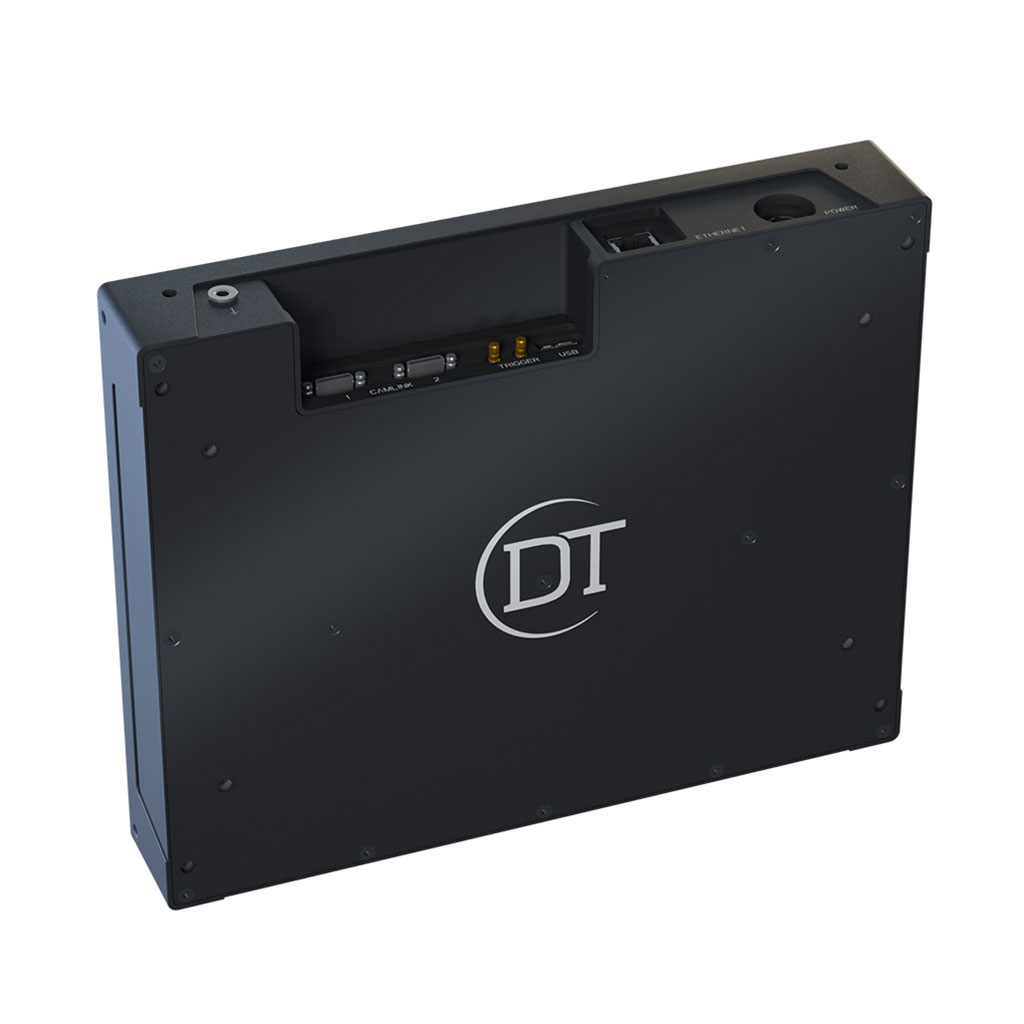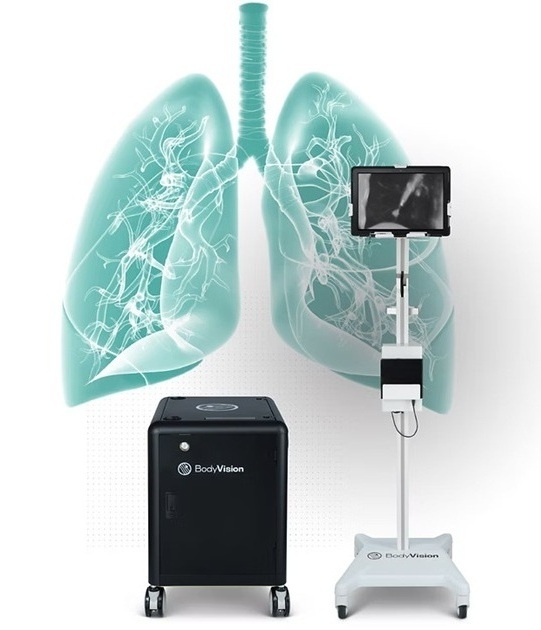Innovative FPD Enhances C-Arm X-Ray Systems
|
By MedImaging International staff writers Posted on 29 Dec 2021 |

Image: The X-Panel 2222s CMOS FPD (Photo courtesy of Detection Technology)
A new digital X-ray flat panel detector (FPD) includes application-optimized improvements to allow low-dose imaging at fast scanning speeds.
The Detection Technology (Espoo, Finland) X-Panel 2222s is a complementary metal oxide semiconductor (CMOS) X-ray FPD series that includes application-optimized variants for mobile and mini C-arm systems. The small form factor takes up less space in operating rooms, and provides a large field of view (FOV) that is unaffected by geometrical distortions. In addition, the X-Panel 2222s comes with a mechanical outline that suits most existing system designs, and with a complete developer aid kit for speeding up system designs.
Features include a high-resolution zoom mode with native 100 μm pixel pitch, ultra-low noise with close to one analog-to-digital unit (ADU) temporal dark noise at 14 bits, and a large active area of 222X216 mm. The fast sensor provides up to 60 full frames per second through a five GigE interface, and true 16-bit analog-to-digital conversion augments image grayscales. And while inherently ultra-stable, even in longer scans, stability is further enhanced by in-built features that virtually cancel the drift.
“We have designed the X-Panel 2222s to be a new trendsetter for dynamic, ultra-low dose imaging in its target markets,” said Jyri Tolonen, product manager in the medical business unit at Detection Technology. “The X-Panel 2222s comes with a mechanical outline that suits existing X-ray system designs, and strong worldwide service. We can guarantee improved imaging performance, yet system integration is straightforward for faster time-to-market and notable total cost savings.”
Mobile C-arm X-ray systems are used for a variety of diagnostic imaging and minimally invasive surgical procedures. Examples include visualizing kidney drainage, abdominal and thoracic aortic aneurysm repair, percutaneous valve replacements, cardiac and vascular surgery, gastroenterology, orthopedics, and pain management and neurology procedures.
Related Links:
Detection Technology
The Detection Technology (Espoo, Finland) X-Panel 2222s is a complementary metal oxide semiconductor (CMOS) X-ray FPD series that includes application-optimized variants for mobile and mini C-arm systems. The small form factor takes up less space in operating rooms, and provides a large field of view (FOV) that is unaffected by geometrical distortions. In addition, the X-Panel 2222s comes with a mechanical outline that suits most existing system designs, and with a complete developer aid kit for speeding up system designs.
Features include a high-resolution zoom mode with native 100 μm pixel pitch, ultra-low noise with close to one analog-to-digital unit (ADU) temporal dark noise at 14 bits, and a large active area of 222X216 mm. The fast sensor provides up to 60 full frames per second through a five GigE interface, and true 16-bit analog-to-digital conversion augments image grayscales. And while inherently ultra-stable, even in longer scans, stability is further enhanced by in-built features that virtually cancel the drift.
“We have designed the X-Panel 2222s to be a new trendsetter for dynamic, ultra-low dose imaging in its target markets,” said Jyri Tolonen, product manager in the medical business unit at Detection Technology. “The X-Panel 2222s comes with a mechanical outline that suits existing X-ray system designs, and strong worldwide service. We can guarantee improved imaging performance, yet system integration is straightforward for faster time-to-market and notable total cost savings.”
Mobile C-arm X-ray systems are used for a variety of diagnostic imaging and minimally invasive surgical procedures. Examples include visualizing kidney drainage, abdominal and thoracic aortic aneurysm repair, percutaneous valve replacements, cardiac and vascular surgery, gastroenterology, orthopedics, and pain management and neurology procedures.
Related Links:
Detection Technology
Latest Radiography News
- Machine Learning Algorithm Identifies Cardiovascular Risk from Routine Bone Density Scans
- AI Improves Early Detection of Interval Breast Cancers
- World's Largest Class Single Crystal Diamond Radiation Detector Opens New Possibilities for Diagnostic Imaging
- AI-Powered Imaging Technique Shows Promise in Evaluating Patients for PCI
- Higher Chest X-Ray Usage Catches Lung Cancer Earlier and Improves Survival
- AI-Powered Mammograms Predict Cardiovascular Risk
- Generative AI Model Significantly Reduces Chest X-Ray Reading Time
- AI-Powered Mammography Screening Boosts Cancer Detection in Single-Reader Settings
- Photon Counting Detectors Promise Fast Color X-Ray Images
- AI Can Flag Mammograms for Supplemental MRI
- 3D CT Imaging from Single X-Ray Projection Reduces Radiation Exposure
- AI Method Accurately Predicts Breast Cancer Risk by Analyzing Multiple Mammograms
- Printable Organic X-Ray Sensors Could Transform Treatment for Cancer Patients
- Highly Sensitive, Foldable Detector to Make X-Rays Safer
- Novel Breast Cancer Screening Technology Could Offer Superior Alternative to Mammogram
- Artificial Intelligence Accurately Predicts Breast Cancer Years Before Diagnosis
Channels
MRI
view channel
New MRI Technique Reveals Hidden Heart Issues
Traditional exercise stress tests conducted within an MRI machine require patients to lie flat, a position that artificially improves heart function by increasing stroke volume due to gravity-driven blood... Read more
Shorter MRI Exam Effectively Detects Cancer in Dense Breasts
Women with extremely dense breasts face a higher risk of missed breast cancer diagnoses, as dense glandular and fibrous tissue can obscure tumors on mammograms. While breast MRI is recommended for supplemental... Read moreUltrasound
view channel
New Incision-Free Technique Halts Growth of Debilitating Brain Lesions
Cerebral cavernous malformations (CCMs), also known as cavernomas, are abnormal clusters of blood vessels that can grow in the brain, spinal cord, or other parts of the body. While most cases remain asymptomatic,... Read more.jpeg)
AI-Powered Lung Ultrasound Outperforms Human Experts in Tuberculosis Diagnosis
Despite global declines in tuberculosis (TB) rates in previous years, the incidence of TB rose by 4.6% from 2020 to 2023. Early screening and rapid diagnosis are essential elements of the World Health... Read moreNuclear Medicine
view channel
New Imaging Approach Could Reduce Need for Biopsies to Monitor Prostate Cancer
Prostate cancer is the second leading cause of cancer-related death among men in the United States. However, the majority of older men diagnosed with prostate cancer have slow-growing, low-risk forms of... Read more
Novel Radiolabeled Antibody Improves Diagnosis and Treatment of Solid Tumors
Interleukin-13 receptor α-2 (IL13Rα2) is a cell surface receptor commonly found in solid tumors such as glioblastoma, melanoma, and breast cancer. It is minimally expressed in normal tissues, making it... Read moreGeneral/Advanced Imaging
view channel
First-Of-Its-Kind Wearable Device Offers Revolutionary Alternative to CT Scans
Currently, patients with conditions such as heart failure, pneumonia, or respiratory distress often require multiple imaging procedures that are intermittent, disruptive, and involve high levels of radiation.... Read more
AI-Based CT Scan Analysis Predicts Early-Stage Kidney Damage Due to Cancer Treatments
Radioligand therapy, a form of targeted nuclear medicine, has recently gained attention for its potential in treating specific types of tumors. However, one of the potential side effects of this therapy... Read moreImaging IT
view channel
New Google Cloud Medical Imaging Suite Makes Imaging Healthcare Data More Accessible
Medical imaging is a critical tool used to diagnose patients, and there are billions of medical images scanned globally each year. Imaging data accounts for about 90% of all healthcare data1 and, until... Read more
Global AI in Medical Diagnostics Market to Be Driven by Demand for Image Recognition in Radiology
The global artificial intelligence (AI) in medical diagnostics market is expanding with early disease detection being one of its key applications and image recognition becoming a compelling consumer proposition... Read moreIndustry News
view channel
GE HealthCare and NVIDIA Collaboration to Reimagine Diagnostic Imaging
GE HealthCare (Chicago, IL, USA) has entered into a collaboration with NVIDIA (Santa Clara, CA, USA), expanding the existing relationship between the two companies to focus on pioneering innovation in... Read more
Patient-Specific 3D-Printed Phantoms Transform CT Imaging
New research has highlighted how anatomically precise, patient-specific 3D-printed phantoms are proving to be scalable, cost-effective, and efficient tools in the development of new CT scan algorithms... Read more
Siemens and Sectra Collaborate on Enhancing Radiology Workflows
Siemens Healthineers (Forchheim, Germany) and Sectra (Linköping, Sweden) have entered into a collaboration aimed at enhancing radiologists' diagnostic capabilities and, in turn, improving patient care... Read more




















